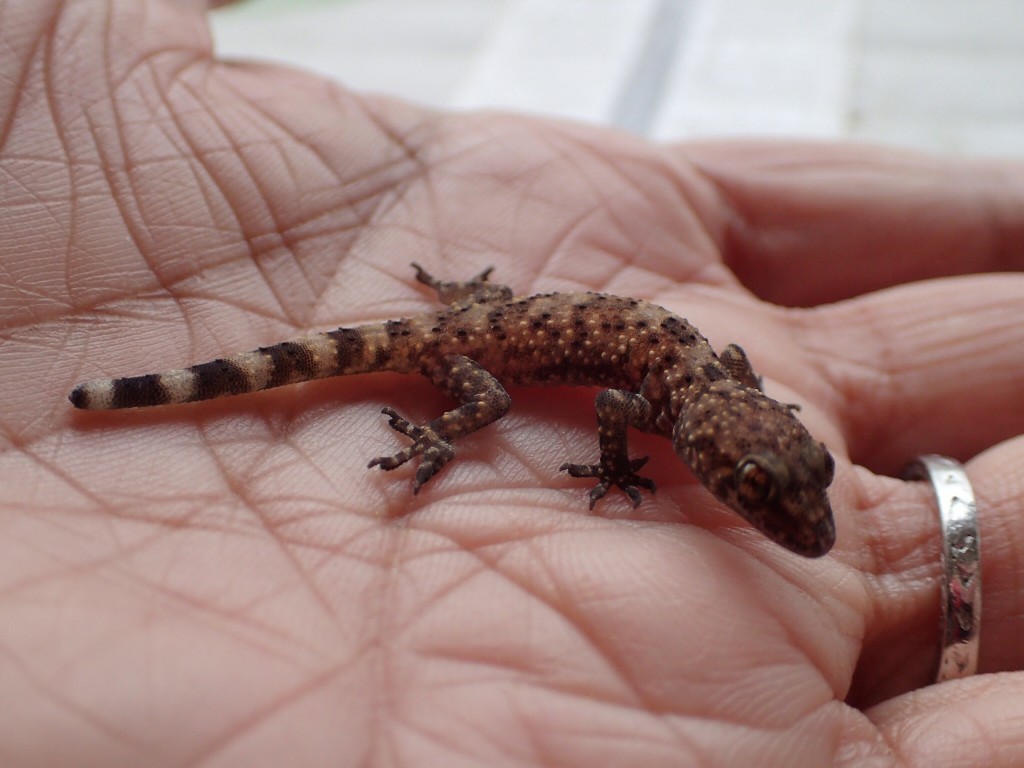This past weekend I was in the San Joaquin Valley to celebrate my dad’s 80th birthday. On a cold and rainy Saturday morning we gathered at my parents’ house to take care of some last-minute things before the big party later that evening. We were in the backyard when I noticed a tiny lizard on the patio under a table. It was so still even as I approached that at first I thought it was dead, but when I touched it it turned its head away from my finger and twitched a leg. Amidst suggestions of “Pick it up” and “Don’t squish it!” I coaxed the little guy onto my hand and held it out for pictures, hoping I’d have time to ID it after all the birthday festivities.
Cute little thing, isn’t it? The entire body is only about 5 cm long. It didn’t look like any of the native lizards or salamanders that I’ve seen, and a little research on the excellent website California Herps confirmed that it is indeed an alien species.
Hemidactylus turcicus, the Mediterranean house gecko, has been living in California since at least as early as 2007. It is a nocturnal gecko that is usually associated with human dwellings, as artificial lights attract the moths and other insects that the gecko preys upon. The predatory habits of this H. turcicus make it a welcome, if informal, house pet in its native range. I was unable to find how H. turcicus made it into California from the Mediterranean, but I bet the original “colonists” were escaped pets. Since they are small (no longer than 15 cm) and nocturnal, they are not considered to be a threat to native California lizards, although their distribution in California seems to expanding northward.
Like most other geckos, H. turcicus has vertical pupils and doesn’t have eyelids. In this picture you can see the pupil. We watched our little guy lick its eyeballs several times, which is what geckos do to keep their eyes clean and moistened.
There’s no way of knowing how long this little gecko has lived in my parents’ backyard, or now long it will live after I let it go. Now that I know about them, I’m going to keep an eye out for them around here where I live. According to the California Herps species map for H. turcicus, there has been at least one verified sighting in Santa Cruz County. They don’t seem to be particularly shy, but their nocturnal behavior and small size may make them difficult to see even if they are fairly abundant. If one makes it into my house, I’ll welcome it and hope my cats don’t catch it. I wouldn’t mind another mouth in the house, if it’s one that I don’t have to feed.



My fiancée just found the same gecko in her kitchen sink. After some research, I stumbled on your article and I too am from the San Joaquin valley! Almost 9 years later and it seems there are still geckos here! Thanks for the great post and information.
You’re most welcome! I hope your fiancee likes her little friend.